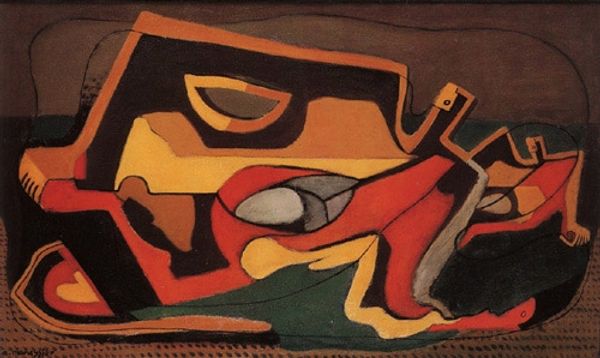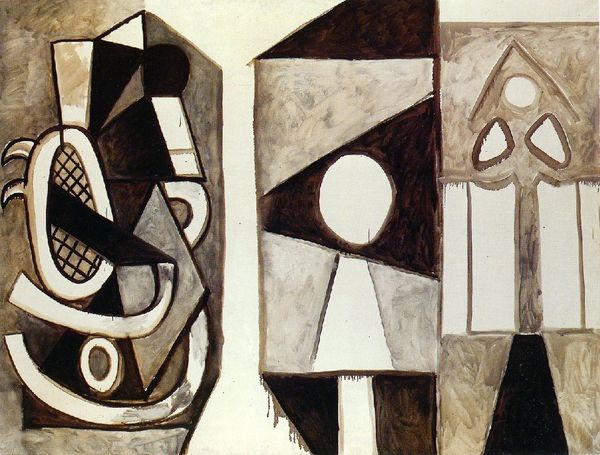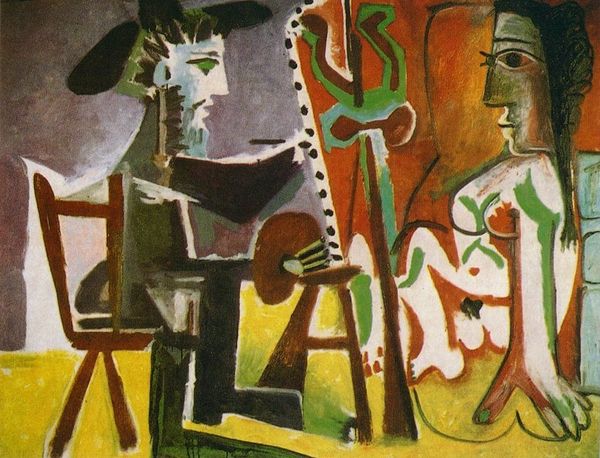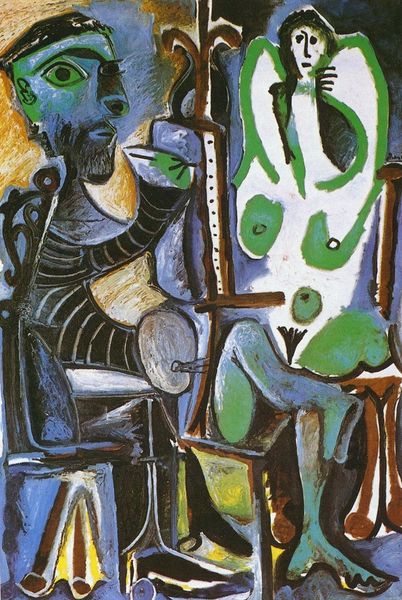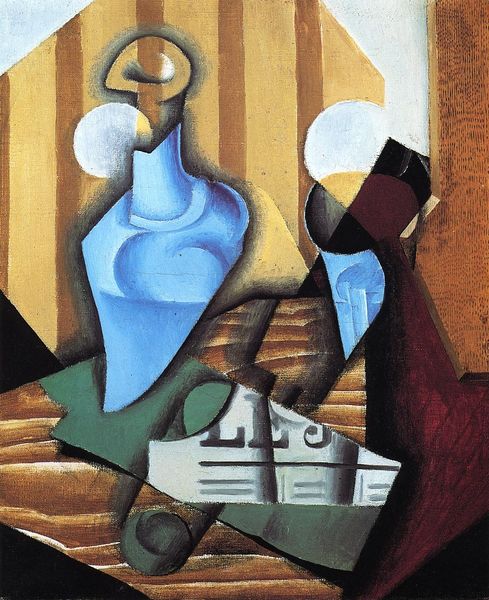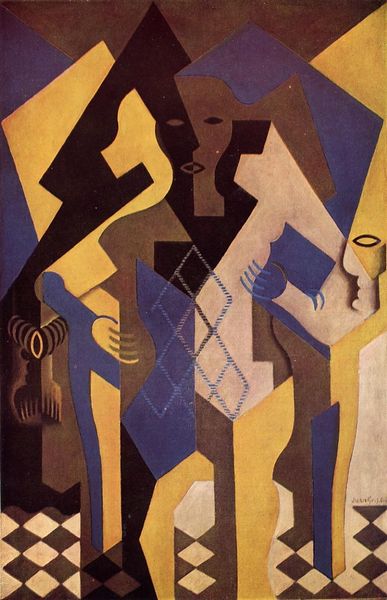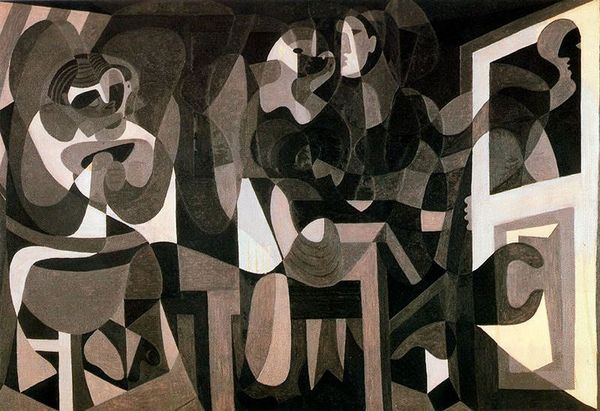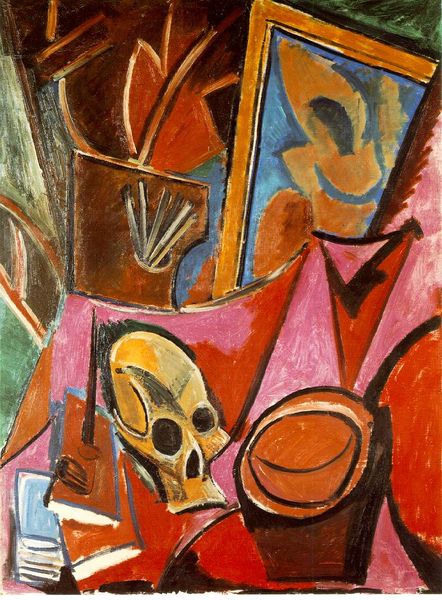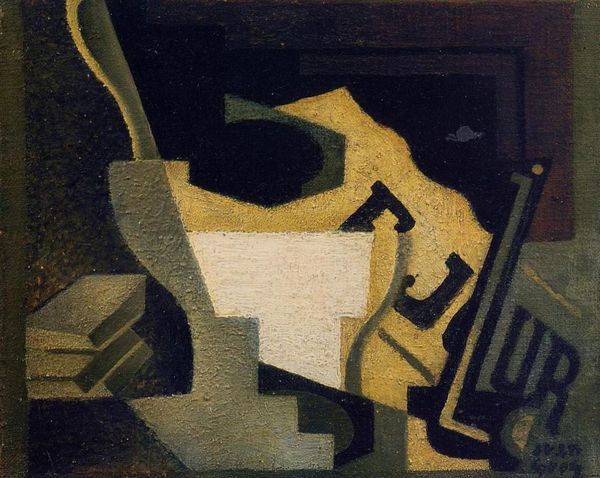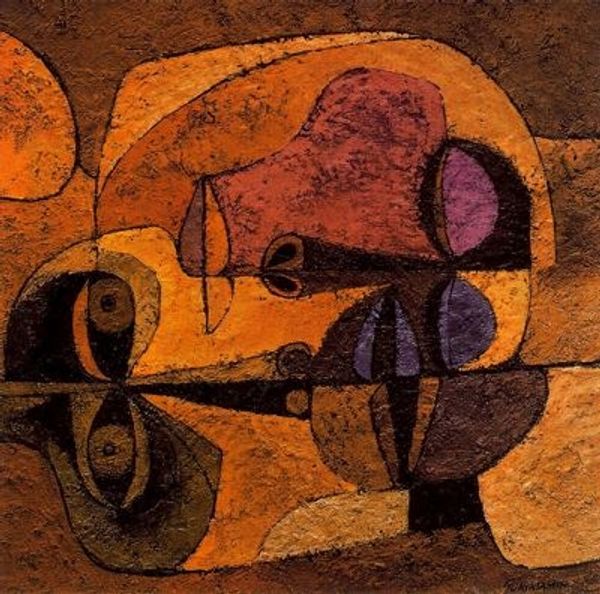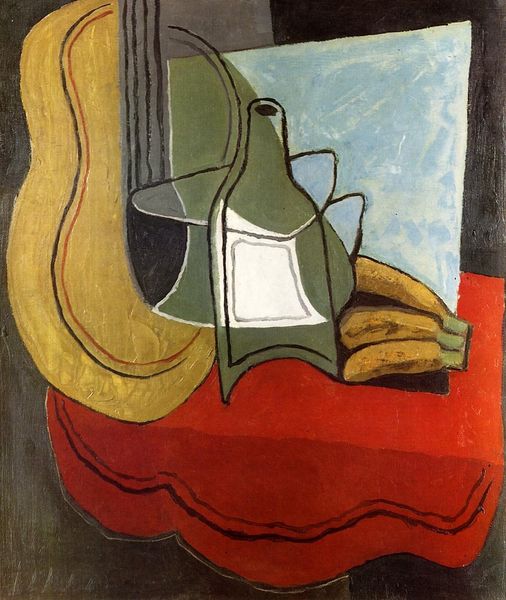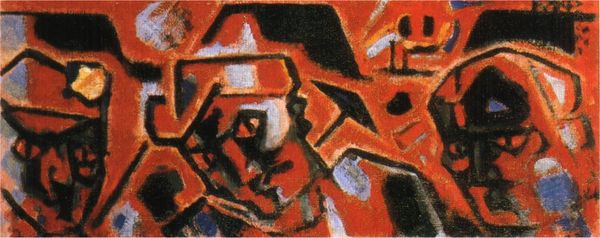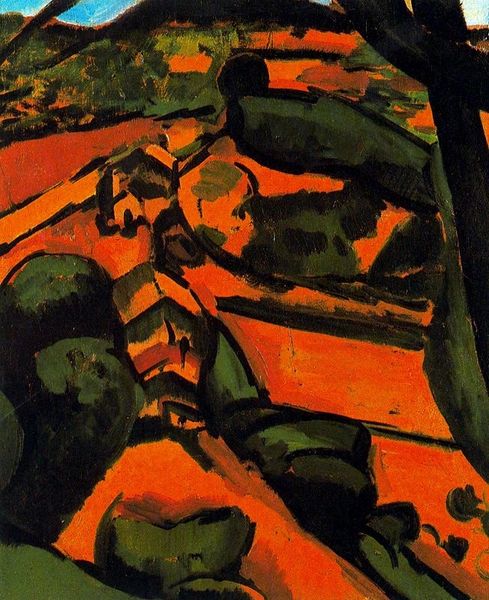
painting, oil-paint
#
cubism
#
abstract painting
#
painting
#
oil-paint
#
oil painting
#
geometric
#
abstraction
#
modernism
#
expressionist
Dimensions: 97 x 130 cm
Copyright: Pablo Picasso,Fair Use
Curator: At first glance, this painting throws me into a somber, reflective mood, doesn't it you? The dark tones, broken forms, they feel weighty, almost funereal. Editor: Yes, there's a stillness. That heaviness might be a result of Picasso’s reduced palette and the very direct gaze of that bust, but this ‘Still Life with Antique Bust,’ created in 1925, comes at an interesting moment of shifting styles for him. We’re exhibiting it here from the Pompidou collection. Curator: He often pulled from a classical past didn’t he? We have the Greco-Roman profile there, sharply outlined in stark black, standing in contrast to what appears to be a guitar. It is almost as if they are engaging in a silent conversation, reaching across millennia. I almost detect anxiety and alienation conveyed through the simplification and fragmentation. Editor: I agree that Picasso's choice to juxtapose these elements invites reflection. This wasn't a political painting, not directly. But in its fractured representation and bold forms, one can read Picasso engaging with broader societal disruptions and anxieties. Still life painting became so critical to many modern painters as a form to grapple with larger issues on a domestic scale. Curator: The guitar especially interests me; we see how its curvaceous form is reduced into geometric abstraction, almost as if the artist is dissecting the nature of art itself, investigating music, painting, sculpture...The geometric quality really strips it down. How does Picasso achieve an expressionist tension between classical ideals and modernist reinterpretation? Editor: Right, it is very visually strategic, especially within that context. Picasso was deeply engaged with art history, even as he broke from it. This piece becomes part of a dialogue between the past and present, one we see playing out very actively across interwar Europe. Curator: Thinking about how persistent those Greek and Roman images were becoming through his painting, in the broader culture... it’s a way of establishing connections with long histories and creating an understanding of his moment as directly tied to powerful civilizations, a way of validating his artistic explorations? Editor: Perhaps. Or even asking what these cultural artifacts now MEAN. In this particular "Still Life", the simplified style is part of how modern art declared itself independent from the cultural functions of the artwork—decoration, didacticism, propaganda. In modernism’s critical autonomy, he perhaps wanted the artist to pose questions rather than provide answers. Curator: It gives a space to reflect on what it is to inherit such rich histories, what it means to then represent a moment. Editor: A still moment with huge resonances.
Comments
No comments
Be the first to comment and join the conversation on the ultimate creative platform.
